Writing Advice:
Dr Len Rogers PhD, MSc, MBA, BA, Dip Mkt, FIoD describes how to use commas correctly, using easy-to-understand examples
Quick links on this page:
I first "met" Len via email. He contacted me with a query regarding writing competitions. We liaised for a while and I learnt that Len wrote regular articles about a wide variety of topics, including writing and grammar. He'd also recently celebrated his 100th birthday, indicating he had a lot of experience and wisdom to share.
I asked to be subscribed to Len's email list, which he uses to circulate his articles. Some of the articles have been published in mainstream news outlets, e.g. The Guardian.
One of the articles Len sent to me focussed on comma usage.
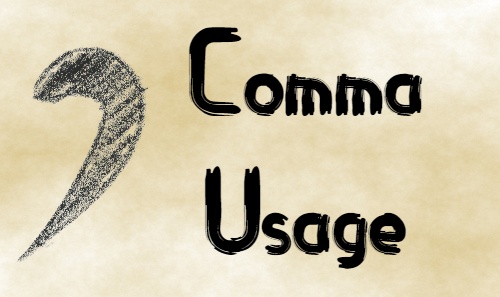
The article used many examples of how to correctly use commas, and was written in clear language that was easy to understand. Well... "easy" might be the wrong word because, when it comes to grammar and punctuation, there are SO many rules and associated caveats that the mind can boggle. Mine certainly does.
Anyway. I asked Len if I could publish the article. He kindly granted me permission. This is that article. I hope you find it as helpful as I did.
As always, comments are welcome. You can find the comments form at the bottom of this page.
There are only four stops or pauses in a sentence ― comma, semicolon, colon and full-stop (period). The comma, the subject of this paper, is the most useful and should be inserted as you write.
Quick links to help navigate this post:
The rules for using commas can seem so complicated and contradictory that writers often use them unnecessarily. If you don’t insert commas as you write but go back after finishing a paragraph and place them in the various spots where you think they should be or where they tempt you, they will swarm like locusts in gaps, cracks, and crevices you hadn’t even realised existed and you will be emulating the advice of a long-term friend of mine, Ted Jenner, now-departed registrar of the Institute of Marketing, that commas should average three to a line!
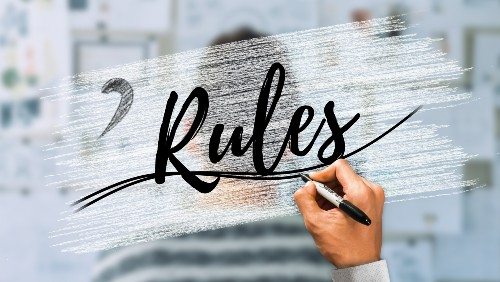
There are four types of commas:

A listing comma can be replaced by the word and or or:

A joining comma must be followed by one of the connecting words: and, or, but, yet, while:

A gapping comma indicates that some words that have already appeared in the sentence will not be repeated:

Bracketing commas, also called isolating commas, are the most frequently used commas and cause more confusion than all the others. A pair of bracketing commas marks off, without disturbing the flow, a weak interruption in a sentence.
In principle, they occur in pairs, though sometimes one of them is omitted as explained below. Here are examples of bracketing or isolating commas:
In each sentence a weak interruption has been set off by a pair of bracketing commas except for the last example that has two weak interruptions. In every one of these examples, the weak interruption set off by bracketing commas could be removed from the sentence without affecting the sense. Observe:
Bracketing commas always give you a simple way of checking punctuation. If you have bracketed some words with commas, and you can’t remove those words without destroying the sentence, you have done something wrong. Here is an example of wrong use.
If you remove the words beyond the hill, the result – However, is a whole new world. – doesn’t make sense. The reason is that the words beyond the hill are not an interruption; they are an essential part of the sentence.
Here is another example:
Remove the words and finding them and the result is She groped for her cigarettes hastily lit one, which is not a sentence. The interruption in this sentence is the two words finding them; the word and is not part of the interruption, but an essential part of the sentence.
So, omit the first comma (i.e. after cigarettes), leave the word and, but omit finding them:
Here are further examples:
That comma after determined isn’t a listing, joining or gapping comma, therefore it must be intended to be a bracketing comma. But where is the interruption it is trying to bracket? It can’t be the three words at the end, which if omitted leaves: Donald was a determined. The weak interruption is the phrase even ruthless and pairing the brackets shows this:
Now, the bracketed interruption can be safely removed:
Rules for using bracketing commas:
The rules of punctuation state that commas are used to separate independent clauses, to set off phrases and words not essential to the meaning of the sentence, to separate two or more coordinate adjectives that describe the same noun, and many other uses. An over-riding rule that needs careful judgment is to use a comma to prevent possible confusion or misreading. Thus, commas are used for:
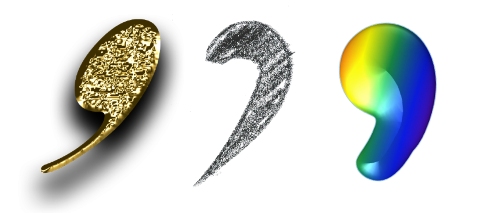
1. "If a killer asteroid was, indeed, incoming, a spacecraft could, in theory, be launched to nudge the asteroid out of Earth’s way, changing its speed and the point of intersection."
This thirty-word sentence is littered with six commas ― one for every five words ― five of them appearing before the halfway point. By simply bending the rule about bracketing interjections with commas the number is reduced by two, rendering the sentence freer flowing:
One more comma can be eliminated by relocating the parenthetical phrase "in theory" to an earlier position in the sentence, so that the comma after incoming does double duty:
2. "The metaphor, 'The world is a machine', began to replace the metaphor, 'The world is a living organism.'"
In this sentence, the comma preceding each instance of metaphor implies that that metaphor is the only one ― not just in the sentence, but anywhere. But two metaphors are expressed here, and innumerable others exist. Metaphor, appearing in apposition [don’t misread this as in opposition!] to the two brief quotations, should not be set off from them:
3. "The event is part of a catchy, public health message about the importance of emergency preparedness."
Catchy and public health are not coordinate adjectives describing 'message'. If it read:
because catchy and quirky are parallel ― they are coordinate adjectives ― a comma should separate them.
It is not that the message is catchy and public health; it's that the public health message is catchy. Therefore, no comma is necessary:
4. "The report was completed in December, 2012."
A comma is necessary between a month and a year only if a date is specified ("The report was completed on December 1, 2012"): "The report was completed in December 2012." (The same rule applies when the name of a season appears in place of the name of a month: "The report was completed in Autumn 2012.")
5. "Jones travelled by boxcar from California to New York with fellow fledgling artist, John Smith, sketching the American landscape along the way." ❌ [This is wrong because John Smith is bracketed with commas. The phrase, "fellow fledgling artist" is an adjectival identity for John Smith, which does not take commas.]
Commas are necessary with this type of apposition (bracketing John Smith) only if the epithet is preceded by an article (a or the):
"Jones travelled by boxcar from California to New York with a fellow fledgling artist, John Smith, sketching the American landscape along the way." ✔ [This is correct because the phrase "a fellow fledgling artist" gives John Smith noun identity for which bracketed commas are needed.]
"Jones travelled by boxcar from California to New York with fellow fledgling artist John Smith sketching the American landscape along the way." ✔ [This sentence has adjectival identity for John Smith and commas are not needed]
It might be easier to follow if the adjective aging is used instead of fledgling:
"Jones travelled by boxcar from California to New York with fellow aging artist, John Smith, sketching the American landscape along the way" ❌ [This is wrong because John Smith does not need commas. Adjectival identity does not require the noun being described to be bracketed with commas.]
Using a or the, indicates a noun (noun identity ― commas are needed).
Absence of a or the, indicates an adjective (adjectival identity―commas are not needed).
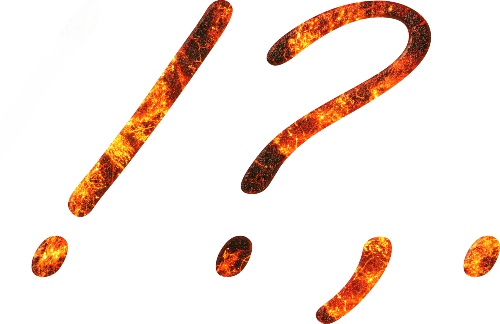
Right or Wrong?
Right! The above sentence is composed of two independent clauses, each informing about two different people who did different things. A comma is needed before the coordinating conjunction [and], even though many English writers do not use a comma in such a case.
Right or wrong?
It depends! In the above example sentence my best friend is probably not a part of the main sentence. Last week’s test and was the hardest ever should be separated with commas. Without commas, the reader may get confused and think that the test "says" that the friend was the hardest, while it is the test that was the hardest. Says my best friend serves as a comment, known as a parenthetical element. The correct punctuation would therefore be:
Right or wrong?
Wrong! In this example sentence the language names come in a series whose elements should be separated with commas. In addition, not having a comma between American and English may make readers think that there is an independent language called American, whereas it is considered only as an English language variety, or conclude that there is a French variety of German. The correct punctuation would therefore be:
(a) A quote is a text that brings the exact words of a speaker in direct discourse. A text that consists only of dialogue (plays, novels etc.) is punctuated according to regular punctuation rules. However, in a text that combines both dialogue and non-dialogue text, the quotations are separated from introductory words (e.g., said, stated, explained, claimed) with quotation marks, commas and other punctuation marks.
(b) The punctuation mark that comes before the quote is left outside the opening quotation mark. The punctuation mark that comes after the quote is put inside the closing quotation marks. The quote itself starts with a capital letter. See the following examples for different positions of the introductory words.
A general stylistic convention in writing is that the more you can say in less words, the more elegant and polished the writing is. Elliptical constructions which omit words are one way of achieving such brevity in writing.
In the following examples, no comma is needed to indicate omitted words:
In the following examples, a comma is needed to indicate omitted words. The sentence may be ungrammatical without it.
Use commas to separate words repeated within a sentence to avoid confusion.
1. Use a comma to separate the date from the year, when written in American style.

2. Do not use a comma to separate any element of the date when written in British style (also common around the world and in the US army.)
Note: As confusion may arise from having two styles of dates, do not write dates using numbers alone. Style growing more common is year, month, day: 2022 Nov 27
3. Use a comma to separate the day from the date.
4. In a full sentence, use a comma on both sides of the year in a full date.
5. Do not use a comma when writing only two date elements, namely, the month and the year, the month and the day, or the season and the year.
1. Use a comma as a "thousands" separator after every three digits in a number, counting from right to left.
(Note: In some countries a space is used instead of a comma, e.g. 87 950)

2. A comma is optional with most four-digit numbers. Whatever option you choose, be consistent in your writing.
3. Never use a comma in a four-digit year. Use a comma if the year has more than 4 digits.
4. Never use a comma in an address of four digits or more.
5. Use a comma to separate related measurements written as words.
6. Use a comma to separate a scene from an act in a play.
7. Never use a comma in a page number of four digits or more.
8. Use a comma to separate references to a page and line.
The standard style for a simple citation takes the form "(Source at 5, lines 10–14", extended in more-complicated citations, such as "(Source at 5, line 20, through 6, line 2)". Otherwise, you are, in effect, demanding that readers learn two short citation forms that will appear interchangeably. But the ungainly complicated citations are the fault of the underlying simple form.
One of the short-form text citation examples in the Chicago Manual of Style (at 16.109) involves multiple page references within a particular source as the following:
When a specific page, section, equation, or other division of work is cited, it follows the date and a comma: (Kotler 1980, 74); (Armstrong 1979, sec. 24); (Hardcastle 1965, eq. 87); (Bryson 2018, 2:354–55, 3:29) (Fisher 1990, 212n3).
In the "(Bryson 2018, 2:354–55, 3:29)" form, indicate relevant pages and lines by adopting the form "(Source, page:line)".
In simple cases, this would yield short-form citations that look like this: (Source, 5:10–14). In more complicated cases, it would yield entries such as this: (Source, 5:20–6:2).
Because a lowercase "l" looks so much like a 1, do not add an "l" element to the short form, to avoid making the citations unduly confusing.
Crucial to adopting any specialised short-form citation style is to make clear what the elements of the short form are. This is particularly important if your short-form style isn't standard. The simplest way to introduce such a form is in a note at the beginning of the citations, where readers will go when they want to identify a citation in full.
9. Use a comma to separate two numbers that lie next to each other in a text.
Use a comma to separate people’s names and their academic degrees. Use a comma after the degree if other words follow it.
Do not use a comma when an indicator of birth order or succession follows a name.
Use a comma if you write a person’s last name before the first name.

Use a comma to separate between two place names in sequence, e.g., city and county/state/country. Add another comma after the place name if more words follow.
When a complete address is part of a sentence, use a comma to separate all the items, except the county/state/country and the post code.
Use a comma for the opening of an informal letter. Some instructors suggest a colon in formal business letters.
Use a comma for the closing words of any letter, and a period for the closing sentence that precedes it.
The "Oxford comma", also known as the "serial comma", is an optional comma used after the penultimate item in a list of three or more items, before "and" / "or":
It was traditionally used by printers, readers, and editors at Oxford University Press to clarify the meaning of a sentence when the items in a list are not single words:
The Oxford comma is attributed to Horace Hart, printer, and controller of the Oxford University Press from 1893 to 1915. He wrote Hart's Rules for Compositors and Readers in 1905 as a style guide for the employees working at the press.
The Chicago Manual of Style is a style guide for American English published in 1906 by the University of Chicago Press. Its 17 editions have prescribed writing and citation styles widely used in publishing. It is one of the most widely used and respected style guides in the United States. Chicago Style and most American English style guides recommend using the serial comma as standard. Lawyers should use it to help avoid ambiguity. Ambiguities may arise without this comma:
Many opponents of the Oxford comma claim that it makes a piece of writing more pretentious and that it can make things seem cluttered and redundant. Some magazine publishers renounce its use as well because sentences loaded with commas take up valuable page space. Its use is largely optional.
This paper on commas is just a drop in the ocean of grammar of English, the most widely used language in the world. The 20-vol Oxford English Dictionary lists 218,632 words of which 171,476 are in current use and 47,156 are obsolete. Webster's 3rd International Dictionary, and 1993 addenda, have 478,000 entries and later dictionaries list 578,707 words. Each year, an estimated 800 to 1,000 new words are added to English language dictionaries, that is, a new word is created every 98 minutes ― in the 20th century alone, more than 90,000 words were added.
Researchers from Harvard University and Google estimated in 2010, that there are 1,022,000 English words and that number could grow by about 8,500 every year. However, this total contains different sorts of identical words, and it depends on how you define "word". New words enter the language at any time. In 2019, no individual could have forecast what became defining words of 2020 ― Covid-19, wokeism. Another new concept is the term tweets and all the words associated with this new terminology. Old words fade away and there are hundreds of antiquated words ― words that are no longer used in contemporary English, and Shakespearean language is not used anymore.
A recent study conducted by Discover Magazine found a positive correlation between the size of a person's vocabulary and their financial success. The more you improve your vocabulary, the better you can convey complex thoughts or terms. The more grammatically accurate use you make of your vocabulary, down to the placing of a comma, the more money you will make.
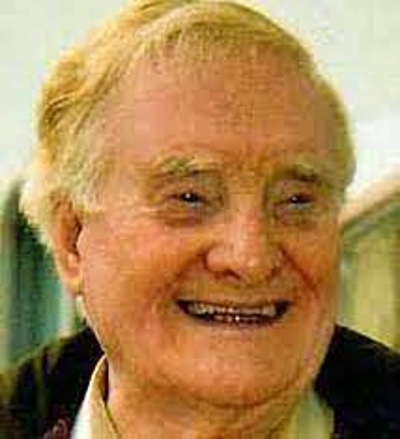
Internationally experienced director, manager, professor. A strategic 'doer' who translates vision into results. Regularly increasing group revenues, profit margins and asset values while maintaining strict controls. Consistently improving clients' and students' projects, research, dissertations, grant applications. A magnetic writer who makes the complex simple. Author of ten business books published by Blackwell, Kogan Page, Heinemann, Pitman & EPB Singapore. Computer literate, "always online" with unequalled turnaround speed. Empathetic disciplinarian developing the best in people.
You can contact Len via his website.
I'd like to thank Len for allowing me to publish this comma guide. Grammar is often confusing, so it's helpful to have clear instructions presented in layman's terms.
Do you have some writing experiences you'd like to share with my readers? If so, please review my submissions guidelines and get in touch.
Jane E
This is a great article, thanks, Chris (and, of course, Dr Rogers)!
Chris Fielden
No problem, thanks Jane :-)
Alan D
Many thanks for this, Len. Chris – keep up the good work!
Chris Fielden
Will do, Alan, all the best to you :-)
Fliss Z
Great post, Chris, thanks.
Chris Fielden
No problem at all, thanks Fliss :-)
Michael N
Wow, I needed this! Thank you so much, Chris, and God bless Dr. Rogers.
Antasia SA
This was very well written, so thank you. I've made a few adjustments just reading this alone, so thank you Chris for finding him. Also, happy 100th birthday to Dr. Len from ASA.
Chris Fielden
No problem, Michael, you're welcome.
And thank you, Antasia, I'm glad to hear Len's post helped you :-)
Dolores P
Thanks to you and Dr Rogers. Very useful.
John M
Clears up a lot of confusion; I especially like the section about the Oxford comma. Thank you!
Chris Fielden
No problem, Dolores - glad you Len's post useful :)
Great stuff, thank you John - glad to hear the Oxford comma section was useful to you :)
Simon B
Couldn't get this out of my head throughout, so the final section of the article felt very apt!
https://www.youtube.com/watch?v=P_i1xk07o4g
(A music video by Vampire Weekend for their song titled 'Oxford Comma'.)
Chris Fielden
That's brilliant, Simon, I haven't seen that video before - thanks for sharing :-)
Phil F
Aha, now I can see that in a few areas I have been wrong in my use of commas. Some of them I was convinced I was correct.
This is very useful, I think I will keep a reference to it somewhere as I am highly likely to need to refer back.
Thank-you for the clarifications. I have always found English grammar well nigh impossible. But until this I thought I was doing pretty well with punctuation.
Chris Fielden
Thank you, Phil.
To be honest, I felt the same after reading Len's post. It's really useful to have the examples.
I'll be publishing more grammar posts by Len soon :)
Warren N
Hey Chris comma loved Lens comma stuff you kindly sent period Has he done similar on the constipated colon comma and its less constrictive friend?
Chris Fielden
LOL – nice way to avoid using punctuation comma Warren :)
Not yet… I will be publishing another post by Len in the next month or two, about inverted commas. Once that’s done, he’s planning one on all the punctuation marks. Should make interesting reads, I think.
Leave your comments
Please use the form below to leave your comments. All comments will be reviewed so won't appear on the page instantly. I will not share your details with anyone else. Most recent comments appear at the bottom of the page, oldest at the top.